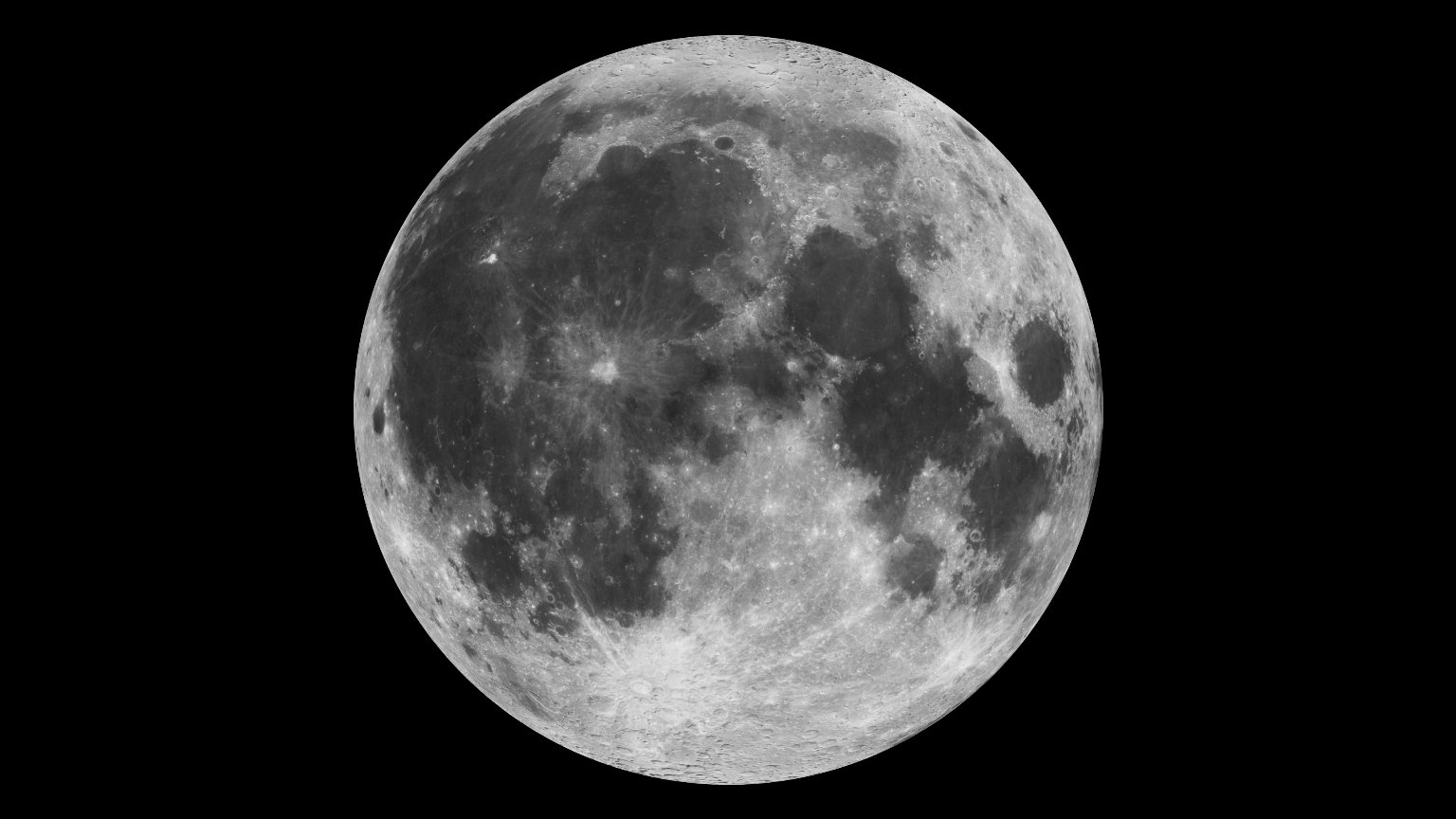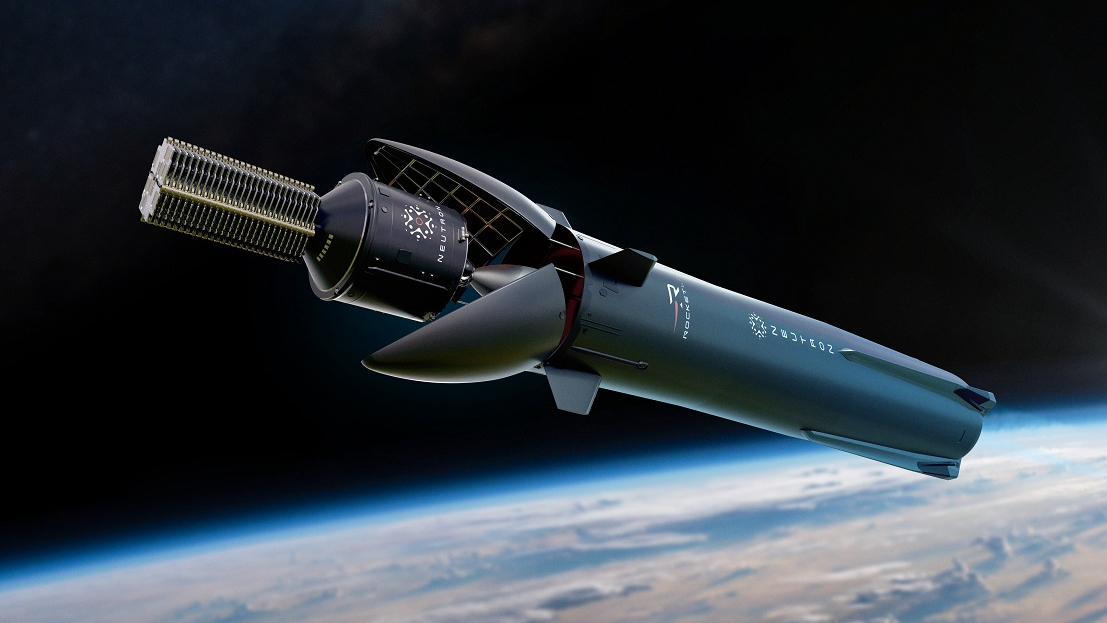Surprise! Earth and the moon aren't made of exactly the same stuff.
The new findings provide a boost to the giant-impact theory of the moon's origin.

The moon and Earth may be more different than previously thought, challenging existing models for how the moon formed, a new study finds.
Earth originated about 4.5 billion years ago, and previous research suggested that the moon arose a short time after that. For the past three decades, the prevailing explanation for the moon's origin was that it resulted from the collision of two protoplanets, or embryonic worlds. One of those was the newborn Earth, and the other was a Mars-size rock nicknamed Theia, after the mother of the moon in Greek myth. "Once the dust settled, two bodies were left — Earth and the moon," new study co-author Zachary Sharp, a planetary scientist at the University of New Mexico in Albuquerque, told Space.com.
This "giant impact hypothesis" seemed to explain many details about Earth and the moon, such as the large size of the moon compared with Earth and the rates of rotation of the two bodies. However, in the past 20 or so years, evidence has emerged to challenge that hypothesis and suggest a multitude of alternatives.
Related: How the moon formed: 5 wild lunar theories
Computer models of the giant-impact scenario often say that 70% to 90% of the moon should be made of material from Theia. The problem is that most bodies in the solar system have unique chemical makeups, and so the Earth, Theia — and therefore the moon — should too. However, rock samples that the Apollo missions returned from the moon show that the natural satellite's composition is uncannily similar to Earth's, much more similar than such models would predict for versions of elements called isotopes. (Isotopes of an element each have different numbers of neutrons in their atomic nuclei.)
This extreme similarity in isotopes of elements such as oxygen has raised great challenges for the giant-impact scenario. One possibility is that the proto-Earth and Theia were nearly identical to start with when it came to oxygen isotopes, which seems unlikely. Another is that the proto-Earth and Theia's oxygen isotopes were fully mixed in the aftermath of the collision, perhaps due to an impact so violent that it vaporized a large portion of the early Earth, with the moon emerging from the resulting, doughnut-shaped mass called a synestia. But this and other scenarios may require unlikely impact conditions, scientists have said.
In the new study, researchers conducted new high-precision measurements of oxygen isotope levels in a range of lunar samples. The researchers expanded on previous work by focusing on a wide variety of types of moon rock.
Breaking space news, the latest updates on rocket launches, skywatching events and more!
The scientists found that there were subtle but regular differences in oxygen isotopic composition depending on the kind of lunar rock tested, Sharp said. This suggested that prior work that averaged together lunar isotope data while ignoring differences in rock type might not have given an accurate picture of the differences between Earth and the moon.
"Going into this project, it was expected that our results would likely mirror that of previous studies," study lead author Erick Cano, a stable-isotope geochemist at the University of New Mexico, told Space.com. "The most surprising part of our results was finding the amount of variation that we did between the individual lunar samples."
Related: How the moon was made: Lunar evolution explained (infographic)
To explain these findings, the researchers suggested that the giant collision between proto-Earth and Theia did indeed lead to mixing between the bodies. Still, the resulting moon and Earth had distinct compositions, albeit very similar ones, Sharp said.
Later, in the first 1,000 or so years after the impact, vaporized rock from the disk of debris left behind by the impact likely led "to lava raining down on the moon for hundreds of years," Sharp said. Complex physical and chemical interactions between this lava rain and the ocean of magma that covered the newborn moon could then have led to an oxygen isotopic composition in the uppermost lunar rocks that was more similar to Earth's. In contrast, samples that came from the deep lunar mantle had the most different oxygen isotopic composition of the lunar rocks tested when compared to Earth.
The most important implication from these findings is that giant-impact models no longer have to account for virtually indistinguishable oxygen isotopic compositions between Earth and the moon, Cano said. "I think this will open the door for an entirely new range of impact scenarios," he added.
Future research can expand on this new study by analyzing other lunar samples, Cano said. "The obstacles for this future research may be the limited quantities of material that we have from the Apollo missions," he said. "Some of these lunar rock types were only brought back in very small quantities and can be very difficult to obtain for study."
Cano, Sharp and study co-author Chip Shearer, a lunar scientist also based at the University of New Mexico, detailed their findings online Monday (March 9) in the journal Nature Geoscience.
- What is the moon made of?
- How was the moon formed?
- The moon on Earth: Where are NASA's Apollo lunar rocks now?
Follow Charles Q. Choi on Twitter @cqchoi. Follow us on Twitter @Spacedotcom and on Facebook.

Charles Q. Choi is a contributing writer for Space.com and Live Science. He covers all things human origins and astronomy as well as physics, animals and general science topics. Charles has a Master of Arts degree from the University of Missouri-Columbia, School of Journalism and a Bachelor of Arts degree from the University of South Florida. Charles has visited every continent on Earth, drinking rancid yak butter tea in Lhasa, snorkeling with sea lions in the Galapagos and even climbing an iceberg in Antarctica. Visit him at http://www.sciwriter.us

